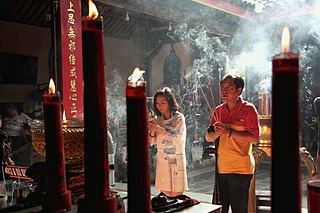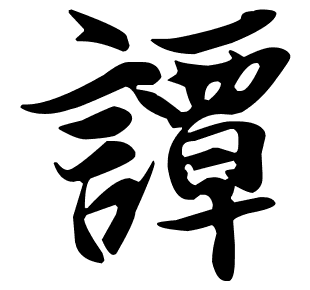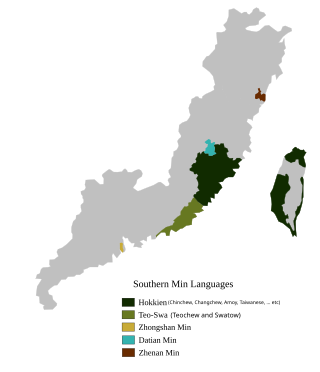Hanyu Pinyin, or simply pinyin, is the most common romanization system for Standard Chinese. In official documents, it is referred to as the Chinese Phonetic Alphabet. It is the official system used in China, Singapore, Taiwan, and by the United Nations. Its use has become common when transliterating Standard Chinese mostly regardless of region, though it is less ubiquitous in Taiwan. It is used to teach Standard Chinese, normally written with Chinese characters, to students already familiar with the Latin alphabet. The system makes use of diacritics to indicate the four tones found in Standard Chinese, though these are often omitted in various contexts, such as when spelling Chinese names in non-Chinese texts, or when writing non-Chinese words in Chinese-language texts. Pinyin is also used by various input methods on computers and to categorize entries in some Chinese dictionaries. Hànyǔ literally means 'Han language'—meaning, the Chinese language—while pinyin literally means 'spelled sounds'.

Standard Chinese is a modern standard form of Mandarin Chinese that was first codified during the republican era (1912‒1949). It is designated as the official language of mainland China and a major language in the United Nations, Singapore, and Taiwan. It is largely based on the Beijing dialect. Standard Chinese is a pluricentric language with local standards in mainland China, Taiwan and Singapore that mainly differ in their lexicon. Hong Kong written Chinese, used for formal written communication in Hong Kong and Macau, is a form of Standard Chinese that is read aloud with the Cantonese reading of characters.
Chinese surnames are used by Han Chinese and Sinicized ethnic groups in Greater China, Korea, Vietnam and among overseas Chinese communities around the world such as Singapore and Malaysia. Written Chinese names begin with surnames, unlike the Western tradition in which surnames are written last. Around 2,000 Han Chinese surnames are currently in use, but the great proportion of Han Chinese people use only a relatively small number of these surnames; 19 surnames are used by around half of the Han Chinese people, while 100 surnames are used by around 87% of the population. A report in 2019 gives the most common Chinese surnames as Wang and Li, each shared by over 100 million people in China. The remaining eight of the top ten most common Chinese surnames are Zhang, Liu, Chen, Yang, Huang, Zhao, Wu and Zhou.

Chinese Indonesians, colloquially Cindo, Chindo or simply Orang Tionghoa or Tionghoa, are Indonesians whose ancestors arrived from China at some stage in the last eight centuries. Chinese Indonesians are the fourth largest community of Overseas Chinese in the world after Thailand, Malaysia, and the United States.

Chinese names are personal names used by individuals from Greater China and other parts of the Sinophone world. Sometimes the same set of Chinese characters could be chosen as a Chinese name, a Hong Kong name, a Japanese name, a Korean name, a Malaysian Chinese name, or a Vietnamese name, but they would be spelled differently due to their varying historical pronunciation of Chinese characters.

Min is a broad group of Sinitic languages with about 70 million native speakers. These languages are spoken in Fujian province as well as by the descendants of Min-speaking colonists on the Leizhou Peninsula and Hainan and by the assimilated natives of Chaoshan, parts of Zhongshan, three counties in southern Wenzhou, the Zhoushan archipelago, Taiwan and scattered in pockets or sporadically across Hong Kong, Macau, and several countries in Southeast Asia, particularly Singapore, Malaysia, the Philippines, Indonesia, Thailand, Myanmar, Cambodia, Vietnam, Brunei. The name is derived from the Min River in Fujian, which is also the abbreviated name of Fujian Province. Min varieties are not mutually intelligible with one another nor with any other variety of Chinese.

Zhang ( ) is the third most common surname in China and Taiwan, and it is one of the most common surnames in the world. Zhang is the pinyin romanization of the very common Chinese surname written 张 in simplified characters and 張 in traditional characters. It is spoken in the first tone: Zhāng. It is a surname that exists in many languages and cultures, corresponding to the surname 'Archer' in English for example. In the Wade-Giles system of romanization, it is romanized as "Chang", which is commonly used in Taiwan; "Cheung" is commonly used in Hong Kong as a romanization.

A kopitiam or kopi tiam is a type of coffee shop mostly found in parts of Indonesia, Malaysia, Singapore, Brunei and Southern Thailand patronised for meals and beverages, and traditionally operated by the Chinese community of these countries. The word kopi is an Indonesian and Malay term for coffee and tiam is the Hokkien/Hakka term for shop. Traditional kopitiam menus typically feature simple offerings: a variety of foods based on egg, toast, kaya, plus coffee, tea, Horlicks and Milo. Modern kopitiams typically feature multiple food stalls that offer a wider range of foods.
The romanisation of the Chinese language in Singapore is not dictated by a single policy, nor is its policy implementation consistent, as the local Chinese community is composed of a myriad of topolect groups. Although Hanyu Pinyin is adopted as the preferred romanisation system for Mandarin and the standard of Chinese education, the general lack of a romanisation standard for other Chinese varieties results in some level of inconsistency. This may be illustrated by the many variants for the same Chinese characters often found in surnames such as Low, Loh, Lo; Tay, Teh; Teo, Teoh; Yong, Yeong.
Many ethnic Chinese people have lived in Indonesia for many centuries. Over time, especially under social and political pressure during the New Order era, most Chinese Indonesians have adopted names that better match the local language.

The languages of Taiwan consist of several varieties of languages under the families of Austronesian languages and Sino-Tibetan languages. The Formosan languages, a geographically designated branch of Austronesian languages, have been spoken by the Taiwanese indigenous peoples for thousands of years. Owing to the wide internal variety of the Formosan languages, research on historical linguistics recognizes Taiwan as the Urheimat (homeland) of the whole Austronesian languages family. In the last 400 years, several waves of Han emigrations brought several different Sinitic languages into Taiwan. These languages include Taiwanese Hokkien, Hakka, and Mandarin, which have become the major languages spoken in present-day Taiwan.

Tan is a common Chinese surname 譚, and is considered the 56th most common.
There are many romanization systems used in Taiwan. The first Chinese language romanization system in Taiwan, Pe̍h-ōe-jī, was developed for Taiwanese by Presbyterian missionaries and has been promoted by the indigenous Presbyterian Churches since the 19th century. Pe̍h-ōe-jī is also the first written system of Taiwanese Hokkien; a similar system for Hakka was also developed at that time. During the period of Japanese rule, the promotion of roman writing systems was suppressed under the Dōka and Kōminka policy. After World War II, Taiwan was handed over from Japan to the Republic of China in 1945. The romanization of Mandarin Chinese was also introduced to Taiwan as official or semi-official standard.
Bopomofo (ㄅㄆㄇㄈ), also called Zhuyin, occasionally Mandarin Phonetic Symbols, is a Chinese transliteration and writing system for Mandarin Chinese and other related languages and dialects. More commonly used in Taiwanese Mandarin, it may also be used to transcribe other varieties of Chinese, particularly other varieties of Mandarin Chinese dialects, as well as languages like Taiwanese Hokkien. Consisting of 37 characters and five tone marks, it transcribes all possible sounds in Mandarin.

Hokkien is a variety of the Southern Min languages, native to and originating from the Minnan region, in the southeastern part of Fujian in southeastern mainland China. It is also referred to as Quanzhang, from the first characters of the urban centers of Quanzhou and Zhangzhou.
Teoh is a romanised Chinese family name. It is a romanization of Teochew and Hokkien names, particularly simplified Chinese: 张; traditional Chinese:. It is also rendered as Tiu, Tio, Thio, and Tiew.
Oey is a Chinese Indonesian surname of Hokkien origin and Dutch-based, West Java romanization. Literally "yellow", or "golden yellow", its Central Java romanization is Oei, while its pinyin version is Huang.
Huan-a is a Hokkien-language term used by Hokkien speakers in multiple countries, namely mainland China, Taiwan, Singapore, Malaysia, Philippines, Indonesia, etc. The word itself when dissected means 番; hoan; 'foreign', + 仔; á; 'diminutive noun suffix', but to the ethnic Chinese that settled overseas in Taiwan and Maritime Southeast Asia, it soon came to refer to the indigenous peoples (natives) in the lands where ethnic Chinese are historical immigrants.
In Chinese dialectology, Beijing Mandarin refers to a major branch of Mandarin Chinese recognized by the Language Atlas of China, encompassing a number of dialects spoken in areas of Beijing, Hebei, Inner Mongolia, Liaoning, and Tianjin, the most important of which is the Beijing dialect, which provides the phonological basis for Standard Chinese. Both Beijing Mandarin and its Beijing dialect are also called Beijingese.
Tee is an English and Chinese surname










